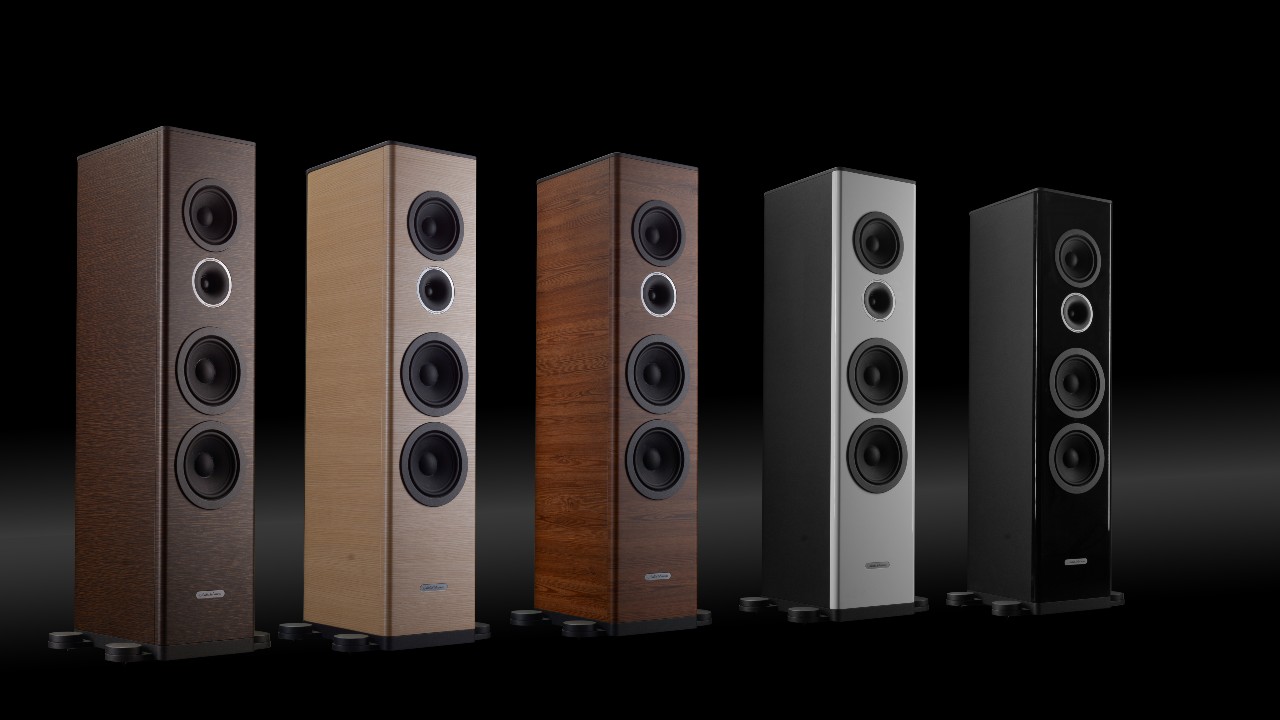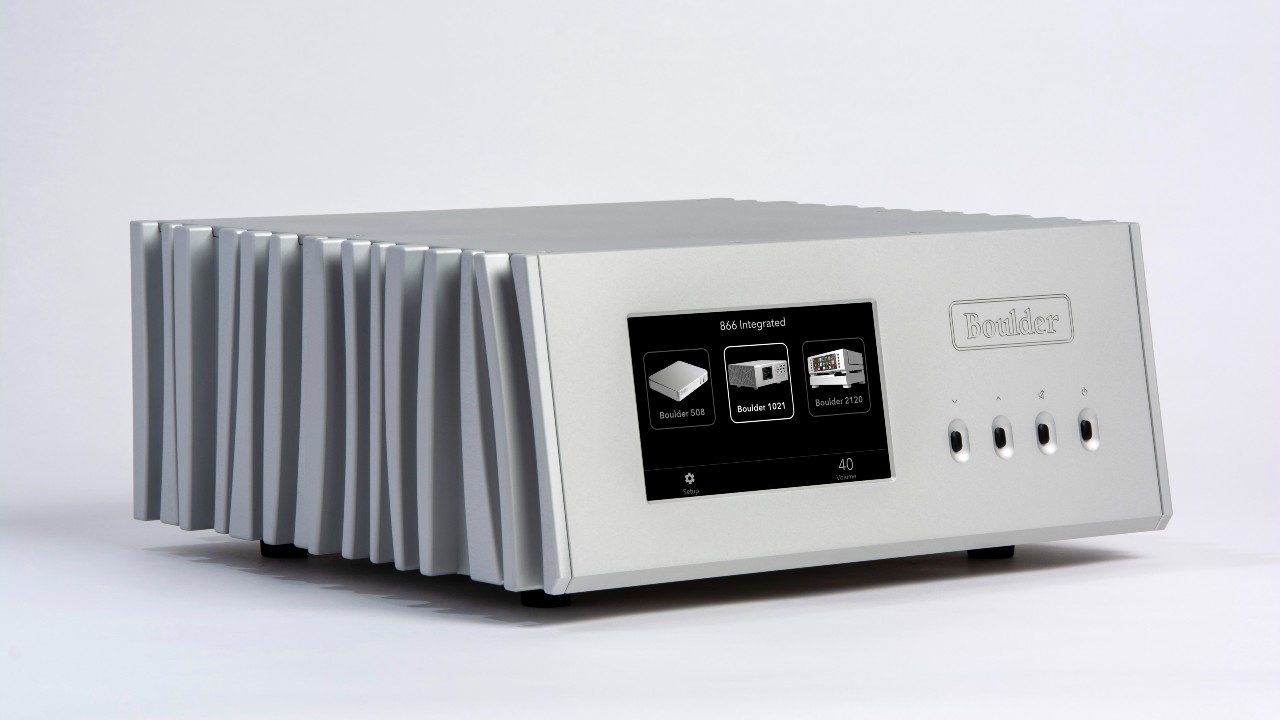Hi End Audio's Rick Stepanov: “I just want to have systems that are based not on profit, but on music reproduction”
The dealer is out to offer something different in the Sydney hi-fi market

Hi End Audio’s Rick Stepanov is on a mission. His hi-fi business in Sydney opened at the worst possible time, just as COVID-19 took hold, potentially devastating retail operations around the world. His initial plans for a store-front firm had to be postponed, but he is now enthusiastic about the future – and even more so about the hi-fi he sells and the music it delivers.
“The whole point of me entering the market… is to prove to this audience here in New South Wales what a good system should sound like,” he says.
Famous brands, sold differently
Hi End Audio may be new to Sydney, but it carries some well-known and significant brands, including Magico, Boulder, APL, Ayon, Vitus Audio, Silent Angel and Siltech. “Magico and Boulder particularly... whoever listens to that combo is just blown away,” says Stepanov. “And even for a modest price, with entry-level Boulder and Magico, that’s a successful combination.”
But also refreshing is his attitude to the retail process, which has grown from his experience in other countries, as well as other cities in Australia. “Wherever I go, I like to get involved and see what other people are doing,” he says. “Do they have a sense of music and sound, or are they just selling whatever they’ve been given? And that’s a frustration in some countries in my experience – you can’t find a good hi-fi shop. And what’s going on? You ask, and then you find out they’re just selling the packages from their distributors.
“So in Europe and the US, where you have many choices, you see the mentality of the people involved in audio. In England, for example, you can walk into any store on any corner and they will have the best for you because there is competition — they’re trying to get an audience, not a huge margin and profit, because they know that once you sell a good thing, they will come back to you.
But here, it’s all about the margins. People don’t have choices, and that’s the problem. It’s not quite a monopoly, but I’d brand it as a monopoly if people can’t get hold of anything else, you know.”
In Australia, Stepanov sees a big difference between the situation in Melbourne compared with Sydney. And that’s why he has set up Hi End Audio to service the harbour city.
The latest hi-fi, home cinema and tech news, reviews, buying advice and deals, direct to your inbox.
“The main reason for me being here in Sydney is to get systems that are not currently available in Sydney and then trying to get people in, to have a listen and judge for themselves,” he asserts. “It’s not the usual concept of Sydney shops — it’s something different. In Melbourne, yes they can find the shops, quite a few of them, and that’s why sales in Melbourne are so competitive and people are getting good gear. But they don’t get it in Sydney. They don’t have the same experience, and if you ask me why... I don’t want to insult other retailers, but they’re getting packages from shops that care about profit. I care about customers.”

It’s all about the music, not the discount
Stepanov has a worthy warning about buying hi-fi based on getting a good deal, something he sees as endemic to the Sydney market.
“You look in London, in every shop there you can be blown away by what $10,000 will give you, or $20,000, and here you can’t find a $300,000 system that sounds good,” he says. “They may give a 50 per cent or 60 per cent discount and customers think that’s a great deal, whether they like the sound or not – it’s about the discount. At Hi End Audio, it’s not about discount. It’s about what you can get from a good system, and then we talk about what you can afford according to your budget. I’m not earning that much profit, yet customers still want to negotiate, because they’re thinking you can give them 60 per cent discount; they think that’s normal. I don’t have 60 per cent margin! Especially on these big brands.
“So that’s my frustration, and those people who have never travelled around, they probably don’t know what I’m talking about. That’s why in the end I thought, ‘well let’s prove something’. I don’t need to get a huge margin, but I need to show people what systems are supposed to do – whether for small money or big money, that’s up to the customer, but at least to get some good matching equipment. The point is to prove that the systems can deliver great music by good matching, rather than ‘I’ll give you a 50 per cent discount, you don’t need to like it, but you get a good price’. That attitude is all over the place, and I’m, like, seriously?
“I have a friend who has just bought some crappy speakers because he got a good discount. But the speakers he already had – they’re so good that I wouldn’t even sell him Magicos, and I told him, ‘You don’t need to replace those!’ But no, he was itchy because they’re giving the discount. And then people are never happy. They’re going around buying and buying because they’re never happy. Really, it’s not about the discount; it’s about whether you like it or not. Why would you buy something that’s 50% discounted but the sound is, you know, OK? Yet people are constantly doing that. What’s wrong with them!”
Hi-gher and lower
Hi End Audio currently operates in two rooms demonstrating different levels of system, and Stepanov is now in the process of building two new dedicated rooms – one measures 7×4 metres and accommodates bigger systems, while the other is 5×4 metres and better suited for smaller systems, such as Denmark’s Vitus Audio electronics feeding Italian-made AudioSolutions speakers (another recommended pairing).
“That’s another great combo,” Stepanov affirms. “AudioSolutions’ speakers can’t compete with Magico’s in, say, weight, but it’s a really pleasant listening session, and you can just enjoy music for relatively little money. People can’t afford ‘big money’ sometimes; they need something affordable that’s still pleasant to listen to. And I have people coming here after other stores and saying ‘this house sounds better than the system I heard which was ridiculously expensive’. That’s exactly what I want to hear. Not that I’m competing with those stores, or anyone else. Far from it. I just want to have systems that are based not on profit, but on music reproduction.”
So, you may be wondering, are cables and other accessories essential to Stepanov’s philosophy? “They are of great importance, especially cabling,” he argues. “And again, it’s not just throwing in some cables because maybe you get a good discount. In all the systems here, the cabling is matching with everything else – that’s the whole point: it’s which cables suit which component, and I can give clear answers to customers. They can spend $1,000, they can spend $50,000, it’s up to their budget, but it has to be right. So Vitus, I know what goes with it; I know which cable goes with AudioSolutions and Boulder… I mean, it’s a personal preference, but I can give advice and, according to what they prefer, I can tell which cable will suit their preference.

“And yes, people are sceptical about cabling. They are sceptical because if they walk into most showrooms here, they have two or three choices, and it’s in a bundle with other equipment, and obviously it’s not working for them. And that’s why they don’t believe. I have a friend who was sceptical about cables, until I put Siltech in, then he spent $30,000 on them. And this gentlemen is 60-something years old and has always been sceptical about cabling. Now he’s telling everyone about cables making a difference…
“The worst thing, the worst part, is that people believe that’s how it should sound, because they’ve never heard anything better. So they think ‘this is best’… they hear a $300,000 system and they’re like, well I don’t know, I’m not that convinced, but it’s a good discount. And then they come here and they’re like ‘oh man this is the best I’ve ever heard’, and for example it’s maybe $50,000.
“I’m sure the $300,000 system they’ve heard is very good, but how they set up the system is perhaps wrong, or the cabling is a bottleneck, or something else. They could sound much better with the right cabling, but they don’t want to make 20 per cent on cabling, they want to make 100 per cent.”
A life in sound
As for so many in the hi-fi world, Stepanov’s experiences with music began early in life. “My dad was a musician,” he tells us, “and I inherited that from him. He was an old rock’n’roller and had his systems, and at a young age I was looking at what all these speakers and amplifiers were doing. But I wasn’t living with him for long enough to say, ‘OK now this is mine!’
“So the music and the hi-fi has been with me for many years, and I was a teenager fiddling with stereo equipment, trying to improve the sound, with friends who were becoming engineers and building amplifiers and preamps. I just got into it.”
Now in Sydney (he is based in the Bella Vista, Baulkham Hills, Castle Hill area, but services all of New South Wales), Stepanov can be easily contacted through his website – very easily indeed, in fact, as he mans the website’s online chat system himself, whether at home, work or wherever he happens to be.
“On the website they can straight away get answers to questions, or leave a message, or I can call back,” he says. “And people do ask questions, because they don’t get good advice around here, and they’re confused, and I know why. And I’m not coming from a sales point of view. I’ll even recommend other people’s products if I think it’s what they need. That’s why people keep calling me back — I’m not even pushing my own products if they’re not right for them, and they can’t believe that.
“I want to build trust, not have people think ‘oh this is a bullshit salesman’. It’ll take me time to get there, but I’m confident that I will get there. That’s my concept; I believe in what I do. The whole point of me entering the market is not to get rich in a short period of time; it’s to prove to this audience here in New South Wales what a good system should sound like.”
Australian Hi-Fi is one of What Hi-Fi?’s sister titles from Down Under and Australia’s longest-running and most successful hi-fi magazines, having been in continuous publication since 1969. Now edited by What Hi-Fi?'s Becky Roberts, every issue is packed with authoritative reviews of hi-fi equipment ranging from portables to state-of-the-art audiophile systems (and everything in between), information on new product launches, and ‘how-to’ articles to help you get the best quality sound for your home.
Click here for more information about Australian Hi-Fi, including links to buy individual digital editions and details on how best to subscribe.

